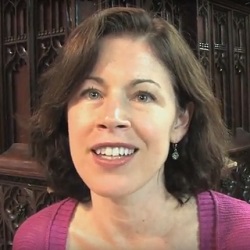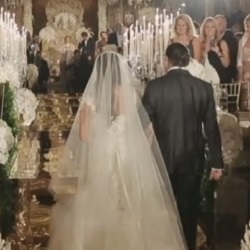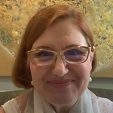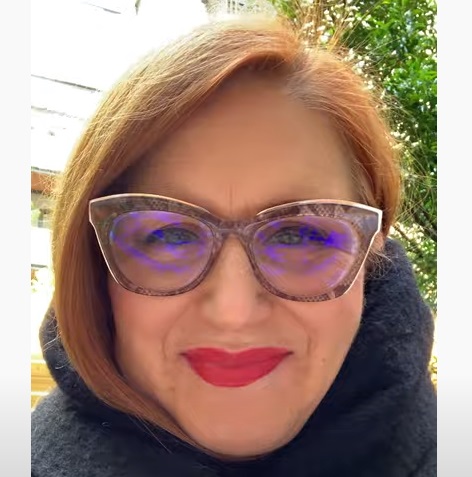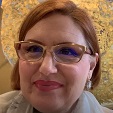
Rev. Susanna's work has been featured on radio and television as well as in various print and web media, including but not limited to: CNN, ABC NEWS, MSNBC’s The Ethical Edge, The Maury Povich Show, The Ananda Lewis Show, Platinum Weddings, The Party Planner with David Tutera, TLC’s A Wedding Story, NPR, The Associated Press, Publishers Weekly, The Huffington Post, Reader’s Digest, The New York Times, The Los Angeles Times, New York Magazine, Time Out NY, Florida Sun Times, San Diego Union-Tribune, San Mateo Times, Modern Bride, Martha Stewart Weddings, Brides, The Knot, The New Etiquette for Today's Bride, New York Weddings, Washington Weddings, Boston Weddings, California Weddings, For the Bride, Wedding Bells, Manhattan Bride, Downtown Express, AIMS Magazine UK, Personal Journey, Your Path to a More Spiritual Life, Style Me Pretty, Wedding Podcast Network, Idotaketwo.com, TopWeddingSites.com, Interfaith.net, Match.com, and Belief.net. For baby blessing ceremonies, Macomb has been featured on MSNBC and in Pregnancy Magazine.
Videos
Article from PUBLISHERS WEEKLY
A House Divided
Interfaith families cut across lines and make religious institutions edgy.
It's the elephant in the family room, and it's getting bigger. Each year, among 2.3 million American unions, thousands of Catholics marry Protestants, Jews marry Christians, and Buddhists, Mormons, Muslims and Greek Orthodox believers marry someone from another religion.
Yet not a lot is written about this phenomenon. The institutions of religion normally charged with marrying couples don't encourage the practice. In Judaism, where the rate of intermarriage is especially striking—an estimated 50% of marriages among Jews today are interfaith—it's even difficult to find a rabbi who will conduct a ceremony. In the American Jewish community, "there are few people who are comfortable writing about it in a nonjudgmental, helpful way," says Stuart Matlins, publisher at Jewish Lights, which has published two recent books on interfaith marriage and family. "People in positions of authority within the Jewish community do not want to appear to be encouraging it."
Mary Helene Rosenbaum, executive director of Dovetail Institute for Interfaith Family Resources and a practicing Catholic married for 40 years to a professor of Judaic studies, puts it more bluntly. "I can't tell you how many times some bright young program director will call and book us, and when the plan to invite us percolates up, this person is going to call back and say, 'They don't want you,' " she says. (Rosenbaum said Dovetail is "radioactive" in the Jewish community because it does not push intermarrying couples toward the raise-your-kids-Jewish option.) The organization has a publishing arm offering such titles as The Interfaith Family Guidebook: Practical Advice for Jewish and Christian Partners (1998) by organization founder Joan Hawxhurst.
The state of publishing on this topic reflects this climate: a few books emerge each season, and the best live on as backlist resources. Publishers and authors know they are meeting a perennial, unsanctioned and growing need. Rev. Susanna Stefanachi Macomb, author of Joining Hands and Hearts: Interfaith, Intercultural Wedding Celebrations—A Practical Guide for Couples (Fireside, Jan.) gets calls from couples and clergy all over the world. "I got a phone call from a rabbi in Costa Rica. He was doing a wedding for a friend's daughter who was marrying a Muslim, and he wanted to know how to incorporate Muslim elements into the ceremony," says Macomb.
Her book stakes out this cutting edge, going beyond Jewish-Christian relationships to address the new unions of traditions, cultures and religions now being forged by people in their 20s and 30s. A licensed and ordained interfaith minister since 1996, Macomb has performed weddings in one of the country's multicultural epicenters, New York City. She had three publishers bid in a week's time on the book, her first, done in collaboration with writer Andrea Thompson. The book is intended for both couples and clergy, with a questionnaire for the couple, chapters on ceremonies and customs from a range of religions and cultures, and the stories of and ceremonies designed by eight couples.
Marcia Burch, v-p and director of publicity at Fireside, hopes the book will be prominently featured among the wedding books stores will highlight come spring. Since the market includes not just couples but also clergy, publicity is being aimed at religion publications and seminaries as well. Macomb has been speaking on the topic at seminaries and running out of books at those engagements, "whether we bring 20, 30 or 40," she notes.
Making a Successful Jewish Interfaith Marriage by Rabbi Kerry M. Olitzky with Joan Peterson Littman (Jewish Lights, Feb.) focuses on intermarriage from a Jewish perspective, offering what is billed as "straightforward and nonjudgmental advice." Olitzky, executive director of the Jewish Outreach Institute and a prolific author, maintains that intermarriage offers an opportunity to increase the Jewish population if more intermarried couples are welcomed and encouraged to raise their children in Judaism. Between two-thirds and three-quarters of such intermarried households don't choose that for their children. In the same vein, Jewish Lights also published The Guide to Jewish Interfaith Family Life: An Interfaithfamily.com Handbook, edited by Ronnie Friedland and Edmund Case (2001), drawn from the titular Web site of resources for intermarried Jewish families.
Within American Christianity, interchurch marriages crossing denominational lines are also common and under-acknowledged. United in Heart, Divide in Faith: A Guide for Catholic-Protestant Couples (SunCreek, Apr.) by Sandra L. Stanko, a partner in a mixed-Christian marriage, addresses that phenomenon, targeting couples beginning relationships in addition to those committed enough to plan marriage. SunCreek is an ecumenical Christian imprint of Texas-based Catholic publisher Thomas More. "There was a need for resources for those couples from both perspectives," says SunCreek acquisitions and marketing director Debra Hampton. The book will be distributed in both the CBA and general markets. One major chain buyer told her, " "There's nothing quite like this on the market," Hampton reports.
Demographic projections show this niche growing as the country's ethnic and religious diversity offers more chances for relationship partners to cross paths, cultures and faiths in new ways. Author Macomb sees this mixing as a norm among the young people she marries, who are so used to cultural and religious variety they don't even begin to consider a potential for conflict. "When they're young and you talk about conflict in terms of religion and race," she says, "they look at you as if you're Martian."
By Marcia Z. Nelson
Special Report > Religion Update
Article from AIMS magazine in the UK
Joining Hands and Hearts; Interfaith, Intercultural Wedding Celebrations
Susanna Stefanachi Macomb collected so much material on interfaith and intercultural wedding celebrations that it could easily have filed a book double the size of the present one. The text was edited by Andrea Thompson helping her to trim it down to some 300 pages. The book is not only a very valuable source of information and practical guide for couples and clergy but is a must for interfaith ministers as well.
Susanna was ordained after studying with the New Seminary writes that 'the beloved Rabbi Joseph Gelberman, an iconoclast of a man, has been my practical and spiritual teacher'. She has officiated at hundreds of wedding ceremonies because her approach really fulfilled a need in the intercultural environment of New York City. She gives some figures indicating that, depending on the particular church, one-third to two-thirds of marriages are now interfaith. She has been featured in several wedding magazine articles and on TV.
The first chapter is titled: 'What is Interfaith? A Philosophy of the Heart' and she answers that 'the teachings of the founders of the world's great religions - the words of Moses, Jesus, Muhammad, Lao Tzu, Buddha - are essentially universal.' This message is encapsulated in a few lines of a poem she quotes:
God is one, but his names are many. Religion is one, but its ways are many.
She mentions that she grew up in a 'traditional Catholic family' but, corresponding very much with my own experience, she writes: 'It is through the discipline and practice of Hindu meditation that I have had the mystical experience of God, known as samadhi.... I have been meditating daily for fifteen years. The practice of meditation ... has not only profoundly affected my life, but transformed it.' I can only add a profound Amen to that.
This experience gave her the insight to expand upon a saying of Gandhi: '.... that in some way I am Christian, I am Jewish, I am Muslim, I am Hindu, I am Buddhist, I am Taoist, I am Sufi, I am Native American.' She states that an 'interfaith or intercultural marriage to me represents one of our universal best hopes of moving toward a promised land, where people of all religions, creeds and colors live side by side, hand in hand, honoring and celebrating both their uniqueness and their commonality.... This is our hope for peace.'
The next chapters are dedicated to customize the event to a specific couple using an extensive questionnaire. She goes into the practicalities of family matters and rehearsal, while technicalities like not throwing rice because it can harm birds, use of microphone and music are not forgotten. The licensing details are of course geared to her local US situation. Subsequently the ceremony is covered in much detail, some of which is optional and decided upon in close consultation with couple and family.
As an admirer of Tolstoy, Gandhi and Fritz Schumacher, this Buddhist quotation appealed very much to me:
Let them be fervent, upright, and sincere, without conceit of self, easily contented and joyous, free of cares, let them not be submerged by the things of the world; let them not take upon themselves the burden of worldly goods; let their senses be controlled; let them be wise but not puffed up, and let them not desire great possessions even for their families.
In the same spirit she quotes the Dalai Lama: 'There is no need for temples; no need for complicated philosophy. My own brain, my own heart is my temple; the philosophy is kindness.'
And because also Jesus declares that his Kingdom is not of this world, I would like to ask you to keep these essential messages in mind if you are pondering a Rolls Royce or expensive city centre hotel wedding.
Part II of the book is written as a Manual covering wedding rituals and traditions in different cultures. First she quotes many universal passages suitable for almost any wedding. Then for fourteen different religious traditions, ranging from Baha'i via Confucianism, Native American to Zoroastrianism, she gives a summary of its teachings followed by many specific quotations. Then she moves on to the cultural heritage of traditions as far apart as Afghani, Chinese, Irish, Latvian, Russian and Swiss. This collection covers forty seven different traditions filling thirty pages. From it I learned that 'Lavender in the bride's bouquet is said by the Dutch to bring good luck." I checked this with my 96 years old mother, but she did not remember that tradition at all. Probably it is a custom still kept by early Dutch colonists of the New World, but forgotten in their home country.
Part III gives eight interfaith, intercultural wedding ceremonies in all their details, while in an Epilogue she refers to the shock of living at ground zero and witnessing from nearby the events of September 2001. She concludes that 'Interfaith dialogue is now needed more than ever' and adds: 'Throughout this book I have said that interfaith, intercultural and interracial unions embody the meaning of respect, tolerance and understanding. We can learn from them.' Elsewhere she quotes from the Hadith, the words of Muhammad:
Shall I not inform you of a better act than fasting, alms, and prayer?
Making peace between one another: enmity and malice tear up heaven's rewards by the roots.
And also from the magnificent dream of Martin Luther King: "all of God's children, black men and white men, Jews and Gentiles, Protestant and Catholics will be able to join hands." On the penultimate page she quotes that great peace activist Gandhi:
My effort should never be to undermine another's faith but to make him a better follower of his own faith.
Susanna dedicates the book 'to all couples and their families who have given me the privilege of walking by their sides. It has been a sacred walking.' She welcomes interfaith, intercultural, interracial love stories and ceremonies for future editions of Joining Hands and Hearts. So 'if you do decide “to share your spirits and your love”, contact her via: www.interfaithweddingceremony.com or at: www.susannamacomb.com
Not only do I recommend this book very much to anyone of you who plans to officiate at interfaith wedding ceremonies, but also as a testimony to a life changed by a regular meditation practice. In her own words: 'By the grace of God, I have been blessed.' The book was not available via the bookshops I checked upon, but can be ordered from Amazon for £ 8.69.
Joop van Montfoort
Celebrating Diversity in the U.S. by Rev. Susanna Stefanachi Macomb
The great American philosopher Emerson spoke of "unity in diversity”, something that is foundational to the American ideal. To be open to diversity in general is a very good first step. However, it seems to me that unity in diversity is the greater call and aim. This unity requires a certain quality of heart. It requires a love for all God’s creatures, great and small, irrespective and because of their infinite varieties in color, culture, religious belief, gender, sexual preference, philosophy or social and economic status. Now grant you, this is easier said then done. Advances in technology and communications, changes in the way we work, the ability to travel anywhere---all have created a truly global village. People from all countries are interacting with one another to an ever-increasing extent. Most societies are still intrinsically tribal and segregated. However, our world is getting smaller by the minute. Inevitably, people of different backgrounds are getting to know one another, especially in the world's great multicultural epicenters, our major urban cities. Invariably, many of these folks of different backgrounds are falling in love, getting married and having children.
Statistics show that approximately 1/3 of all new marriages now taking place in the U.S. are intermarriages---that is interfaith, intercultural or interracial in nature. A 2001 survey by the Graduate Center at the City University of New York shows that 29 million American couples (married or not) live in mixed-religion homes. One survey, according to the NY Times, finds that 40 percent of Americans had dated someone of another race.
When it comes to matter of religion and intermarriage in the U.S:
- Over forty percent of marriage-age Catholics marry outside the Church, doubling since the 1960s.
- Three in ten Mormons are now in interfaith marriages.
- One in three Episcopalians and one in four Lutherans have married outside their churches.
- The Greek Orthodox Archdiocese of America reports that two-thirds of its marriages are interfaith.
- The number of Jewish-Christian couples doubled to one million during the 1990s.
- Four in ten Muslims are choosing non-Muslim spouses.
- The intermarriage rate approaches sixty percent for Buddhists, the fastest-growing Eastern religion in the United States.
- The only outdated statistic I could find with regard to intermarriage in Hinduism is ten years old and states that 5 percent of Hindus live in interfaith households.
Here are more numbers and facts:
Of the over one million LEGAL immigrants a year entering the US, over 80 percent are non-European. The greatest numbers are from Latin America, the Caribbean as well as Asian countries.
The U.S. census revealed that, among native born, married, Americans ages 25-34 years old, over two-fifths of Hispanics and one-half of Asians had spouses who belonged to a different ethnic or racial group. The number of black-white couples alone tripled between the years of 1970 and 1991. This is significant when we note that as recent as 1958 a white mother in Monroe, N.C., called the police after her young daughter kissed a black playmate on the cheek. The boy, Hanover Thompson, age 9, was then sentenced to 14 years in prison for attempted rape. Outrageous but true. After failed appeals, he was released following a public outcry. Today we have Clarence Thomas, a conservative black supreme court justice who lives in Virginia, married to a white woman, and ironically it was in Virginia that the case of Loving v. Virginia struck down antimiscegnation laws.
40 percent of all children born to an Asian or Pacific Islander parent also have a non- Asian or non-Pacific Islander parent. The number of Japanese-American children being born today who have one non-Japanese parent jumped to 60 percent in recent years. Here we have come a long way from World War II when we placed those of Japanese heritage in internment camps.
Today, the world’s famous child of intermarriage is our beloved Tyger Woods whose ancestry is a combination of black, Thai, Chinese, white and Native American.
These diversity figures are quickly rising giving weight to the words of Martin Luther King, “Hate cannot drive out hate. Only love can do that.”
As an interfaith minister, I have had the privilege of working with people from an amazing variety of backgrounds. I have studied the world’s great traditions. Increasingly exposed to their teachings, their followers and rituals, I learn more and more of the transcendence of this glorious universe. After all, the essence of each tradition is alight with the same fire. It is the lamps that are different.
I counsel blended families…especially through life’s major rites of passage. My book, Joining Hands and Hearts deals with the topic of intermarriage. With regards to intermarriage, I have worked with some of the most challenging situations: The joining of an elite upper class Southern debutante with a middle class African American from the north. Her father refused to walk her down the aisle until he and his wife spent some time talking with me. I had spent months counseling a Palestinian Muslim and an American Jew who had fallen in love. Unfortunately, their families did not share in their happiness (to put it mildly.) Then as fate would have it, one of them barely survived 9/11. After that they said to me, “We now know what is important in life. Will you marry us?” I have worked with children of Holocaust survivors…one in fell in love with a devout German Catholic and another with a Greek Orthodox woman. I have counseled Indian Hindus marrying Middle-Eastern Muslims. Irish Catholics marrying Moroccan Muslims. Vietnamese Buddhist marrying Sicilian Catholic. Iranian Jewish marrying Chinese Taoist. African American marrying British (both Episcopalian)….Japanese Shinto marrying American Jewish. Latin American Born Again Christian marrying Korean Agnostic…. Pakistani Zoroastrian marrying American Buddhist. I have celebrated many unions where there existed 4-5-6-7 cultures between them. Chante` and Judah, for example, a couple featured within my book had between them a combined African American, Native American, French, Polish, Russian, Catholic, Baptist, Jewish, Sufi, Rasta heritage. 10 traditions, 10 times blessed!
Some of these families choose to raise their child in one faith. Others choose to celebrate the full breadth of their cultural and religious heritage. Still others choose a third religion for their blended family, while there are those who prefer a non-denominational neutral approach. There are no cookie cutter solutions here. The answers are as varied as the families themselves.
Not too long ago, I performed the memorial service for a wonderful Albanian Muslim woman who died at the ripe age of 92. Her five Albanian Muslim children had married Middle Eastern Muslims and European Christians and her grandchildren extended their circle even further by intermarrying with Jewish, Chinese and Latin spouses. Yes, for the service, we incorporated a blend of all these prayers and traditions.
Someone once compared my office studio to an U.N. outpost. And sometimes in certainly feels that way. I consider this work a gift. Personally, I revel in the symphony of mankind’s colors, textures and traditions. However, I won’t lie to you by saying that it is easy work. One of my favorite stories in this regard was told to me by a Methodist minister from the Mid-West. He was to co-officiate with a Rabbi for an interfaith, intercultural wedding ceremony. They both showed up at a scheduled meeting between the two families. The meeting was so acrimonious that afterwards the Rabbi turned to the minister and said, “You do the ceremony, and I’ll pray for you!”
Sometimes I refer to my studio office as the crying room. For I have also counseled many young folks who were disowned by their parents for marrying someone of a different color or faith. I have seen relationships fall apart because of external family tensions due to the intermarriage issue. Having said that, I have seen many more relationships where love has conquered all.
Generally, the younger generation is more interfaith and multicultural in terms of their peer group and in their love relationships. Usually it is the parents and grandparents that have the issues. I remember one particular conversation amongst family members at a wedding reception of a multi-cultural union where one young person stated (quite joyously), “Soon we (humanity) all will be mixed in one way or another.” His elderly grandmother immediately took my arm and commented, “I know. Isn’t it just awful!”
Some people see this ever increasing diversity as a cause of alarm. They feel that we are losing our way life. Others fear that the present majority will become the minority. Still others simply fear what they don’t know. Fear breeds all the –isms, racism, sexism, religiousism, classism, ageism etc. We need to rise up, examine and face our fears. We all have fears, prejudices and biases. Be wary of those who say they do not! Martin Luther King once admitted that it was not the angels of darkness he feared (for he knew where to find them and where they stood), it was the angels of light.
What can we do as individuals? We can speak out when we see any of the isms spreading. We can reach out and learn another’s point of view and way of life. We can participate joyously. And we can practice empathy. Empathy is a powerful tool.
As a white person, I may never understand what it means to be a black person with a history of brutal, demoralizing slavery where my people were told by white people that we were less than human---but I can try. I can study African American history, read books, watch documentaries. I can look at the horrors of what was done and face it head on. I can examine my own guilt and fear. I can look at the racism that still goes on today---including subtle racism. This takes courage.
Raised as a Christian, I may never be able to understand what is means to be a Jew. What does it mean to live knowing that humanity turned their heads and collaborated in a heinous genocide upon my people? But I can try. I can study the history of pogroms, of the holocaust. I can listen to the stories told by Holocaust survivors. And I can look squarely into today's face of anti-Semitism. I can, at the very least, try.
As a non-Asian, I may not be able to completely understand the frustration of all the stereotyping-the many assumptions that people often make about Asians---but I can listen and learn. For example, one Chinese high school student told me that he was sick and tired of everyone assuming that he was good at math. He wasn't. He was more inclined towards the arts. A Korean man told me that he resented how many non-Asian women somehow perceived him as somehow being less sexual than Caucasian, African American or Latin men. Stereotyping---though we all do it to some degree-is a form of racism. The key is to be aware---be alert---when you are doing it. Then slowly we will be able to stop.
As a non-Muslim, I may not be able to fully grasp what it means to be a Muslim living in America today…but I can try. I have to face looks of fear, distrust or anger--often sneers and comments from my neighbors who look at me, my family and my relatives and often see nothing but terrorists. The word Islam comes from the word peace. Yet how many of us are willing to take the time or energy to learn about this religion which brings peace to over 1 billion of our world neighbors? We must try.
So much fear is dispelled when we get to know one another through listen and talk. Huston Smith once wrote, "Those who listen, listen for peace." It takes a quality of heart to want that. It takes love and compassion to revel in the fullness and beauty of humanity's mosaic. That seems to me to be the great call. Humanity has made tremendous progress. I, for one, rejoice in that progress and I recognize that we still have a long way to go.
Susanna Stefanachi Macomb is an ordained, licensed interfaith minister as well as an ordained Sufi cheraga in the Universal Worship Service, the author of Joining Hands and Hearts, Interfaith, Intercultural Wedding Celebrations, A Practical Guide for Couples (Fireside/Simon and Schuster 2003) and Bless This Child, A Comprehensive Guide to Creating Baby Blessing Ceremonies, and a painter whose work has been exhibited internationally. She is revolutionizing how rites of passage are done. Publishers Weekly referred to Joining Hands and Hearts as “cutting edge, going beyond Jewish-Christian relationships to address the new unions of traditions, cultures and religions now being forged by people in their 20s and 30s.” Her work has been featured in (but not limited to) the Los Angeles Times, New York Times, The Huffington Post, New York Magazine, Publishers Weekly, The Reader’s Digest, New York Magazine, Modern Bride and Marsha Stewart and in local papers throughout the U.S. Susanna’s work has also been featured on national radio and local and national television. She is currently working on her next interfaith, intercultural books in her continued hope of spreading a message of peace.




